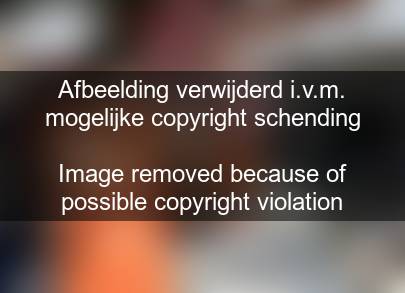Filipinos: LEST WE FORGET!
Ano ni Mus - 19.06.2010 04:00
We seem to have forgotten that once upon a time, not too long ago,
there was this family, the Marcoses, comprised of Ferdinand (now deceased),
Imelda (still gallivanting and traipsing the light fantastic in Manila and
occasionally overseas), and 3 children, including
Ferdinand "Bongbong" Jr who's now running, under Presidential candidate
Manny Villar, in the SAME Senatorial slate as political activists Liza
Maza (Gabriela Women's Party) and Satur Ocampo (Bayan Muna - People First).







Charlie Avila, who HAS NOT forgotten what the Marcoses did, reminds
us, in his CHRONOLOGY OF THE MARCOS PLUNDER, that in.
September 1976
This month the Marcoses bought their first property in the U.S. - a
condo in the exclusive Olympic Towers on Fifth Avenue in New York . Five
months later they would also buy the three adjoining apartments, paying a
total of $4,000,000.00 for the four and using Antonio Floirendo's company,
Theaventures Limited in Hong Kong , as front for these purchases.
October 13, 1977
Today, after addressing the UN General Assembly, Imelda celebrated
by going shopping and spending $384,000 including $50,000 for a platinum
bracelet with rubies; $50,000 for a diamond bracelet; and $58,000 for a pin
set with diamonds.
The day before, Vilma Bautista, one of her private secretaries, paid
$18,500 for a gold pendant with diamonds and emeralds; $9,450 for a gold
ring with diamonds and emeralds; and $4,800 for a gold and diamond necklace.
October 27, 1977
The Marcoses donated $1.5 million to Tufts University in Boston ,
endowing a professorial chair in East Asian and Pacific Studies at the
Fletcher School of Law and Diplomacy. The students and professors discovered
this and forced the school to reject the donation. To save face, the
Marcoses were allowed to finance several seminars and lectures.
November 2, 1977
Still at her shopping spree, Imelda paid $450,000 for a gold
necklace and bracelet with emeralds, rubies, and diamonds; $300,000 for a
gold ring with emeralds and diamonds; and $300,000 for a gold pendant with
diamonds, rubies, and thirty-nine emeralds.
July 1978
After a trip to Russia , Imelda arrived in New York and immediately
warmed up for a shopping spree. She started with paying $193,320 for
antiques, including $12,000 for a Ming Period side table; $24,000 for a pair
of Georgian mahogany Gainsborough armchairs; $6,240 for a Sheraton
double-sided writing desk; $11,600 for a George II wood side table with
marble top - all in the name of the Philippine consulate to dodge New York
sales tax.
That was merely for starters.
A week later she spent $2,181,000.00 in one day! This included
$1,150,000 for a platinum and emerald bracelet with diamonds from Bulgari;
$330,000 for a necklace with a ruby, diamonds, and emeralds; $300,000 for a
ring with heart-shaped emeralds; $78,000 for 18-carat gold ear clips with
diamonds; $300,000 for a pendant with canary diamonds, rubies and emeralds
on a gold chain.
After New York, she dropped by Hong Kong where a Cartier
representative admitted it was this Filipina, Imelda, who had put together
the world's largest collection of gems - in 1978.
May 1979
The Marcos couple celebrated their twenty-fifth wedding anniversary
in a party that cost $5,000,000.00 There was a silver carriage drawn by
eight white horses.
November 23, 1978
A house was purchased at 4 Capshire Drive in Cherry Hill , New
Jersey (actually near to Philadelphia where Bongbong was taking courses at
that time) for use by servants and Bongbong's security detachment.
The Marcoses did not neglect their annual real estate purchase.
During this year and next year, 1979, they purchased two properties - one at
3850 Princeton Pike, Princeton - a 13-acre estate for use by daughter Imee
as she attended Princeton . The other was a house at 19 Pendleton Drive in
Cherry Hill for use of Bongbong and under the name of Tristan Beplat,
erstwhile head of the American Chamber of Commerce in the Philippines .
April 1979
In two days in New York this month, Imelda spent $280,000 for a
necklace wet with emeralds and diamonds; $18,500 for a yellow gold evening
bag with one round cut diamond; $8,975.20 for 20-carat gold ear clips with
twenty-four baguette diamonds; $8,438.10 for 18-carat gold ear clips with
fifty-two tapered baguette diamonds; and $12,056.50 for 20 carat gold ear
clips with diamonds. June 1980
For $1,577,000.00 in New York Imelda buys Webster Hotel on West 45th
Street . She rewards Gen. Romeo Gatan as a limited partner.. Gatan arrested
Ninoy at the beginning of Martial Law.
The insurgents' ranks grew by twenty percent a year.. Meritorious
officers in the armed forces experienced low moral due to Marcos' penchant
for promotig friends over more deserving officers.
February 16, 1986
In Fe's records of monies paid out during Marcos' last campaign, one
unusually large item was authorized by "FL" (First Lady) and paid to
Assemblyman Arturo Pacificador on this day. A few days later, two carloads
of men drove into San Jose , the provincial capital of Antique. Evelio
Javier, head of Aquino's campaign, was watching the votes being counted when
the men opened fire and killed Evelio after he was still able to run through
town but finally got cornered in a public toilet where he was gunned down in
front of shocked townspeople. Pacificador was later convicted of the murder.
February 25, 1986
Marcos fled the Philippines leaving behind a foreign debt of $27
billion and a bureaucracy gone mad. "Cash advances" for the elections from
the national treasury amounted to Php3.12 billion ($150 million). The
Central Bank printed millions of peso bills, many with the same serial
number. Sixty million pesos in newly printed bills were found in a vehicle
owned by Imelda's brother Bejo in the Port Area of Manila, and another Php
100 million aboard the MV Legaspi also owned by Bejo Romualdez.
How massive and humongous a loot Marcos took can be deduced from the
known losses he left behind.
The known losses he left at the Central Bank included $1.2 billion
in missing reserves and $6 billion in the Special Accounts.
Imelda charged off most of her spending sprees to the PNB or
Philippine National Bank which creatively wrote off her debts as
"unresponded transfers". Ver also used PNB funds to finance his
"intelligence" operations.
The known losses at the PNB amounted to Php72.1 billion At the DBP,
the losses Marcos left behind totaled Php85 billion; at the Philguarantee,
it was Php6.2 billion ; and at the NIDC or National Investment and
Development Corporation (NDC) - the losses amounted to Php 2.8 billion.
These losses were primarily due to cronyism - giving loans to
cronies that had little or no collateral, whose corporations were
undercapitalized, whose loan proceeds were not used for the avowed purpose,
and where the practice of corporate layering was common, i.e. using two or
more companies with the same incorporators and officers, whereby one company
which gives the loan owns the company which obtains the loan, or similar
arrangements. The cronies enjoyed their closeness to Marcos. With him they
formed a Grand Coalition. They participated in the exercise of dictatorship.
But Marcos owned them. The wealth of the cronies belonged to him.
Because of the free rides taken by Imelda, Marcos and the cronies,
the Philippine Airlines was in debt by $13.8 billion.
The conservative Grand Total for losses Marcos left behind (and
therefore the kind of loot he grabbed and hid) amounted to $17..1 billion.
The Central Bank, the PNB, and other financial institutions badly
need an audit. The special review (not regular audit because there seems not
to have been any - there are no records anyway) did not uncover Imelda's
spending - her name never appeared - and Ver's intelligence fund.
The review gave no hint of theft or missing money, only "downward
adjustments" and "proposed adjustments" to "deficiencies" and "shortages of
money".
February 26, 1986
A few hours after the Marcos party landed in Honolulu , their
luggage arrived - 300 crates on board a C-141 cargo jet. It took twenty-five
customs officers five hours to tag the bags and identify the contents. The
process was videotaped because of all the money and jewelry found inside.
There were 278 crates of jewelry and art worth an estimated US$5
million. Twenty-two crates contained more than Php27.7 million in newly
minted currency, mostly hundred-peso denominations worth approximately
US$1,270,000. 00 (It was illegal for anyone to depart the Philippines
carrying more than Php500 in cash. )
There were other certificates of deposit from Philippine banks worth
about US$1 million, five handguns, 154 videotapes, seventeen cassette tapes,
and 2,068 pages of documents - all of which were impounded by Customs. The
Marcos party was allowed to keep only US$300,000.00 in gold and $150,000.00
in bearer bonds that they brought in with their personal luggage because
they declared them and broke no US customs laws.
There were 24 one-kilo gold bars fitted into a=2 0$17,000
hand-tooled Gucci briefcase with a solid gold buckle and a plaque on it that
read, "To Ferdinand Marcos, from Imelda, on the Occasion of our 24th Wedding
Anniversary. "
February 1986
When Marcos departed the Philippines , the losses in the three
Central Bank accounts surpassed Php 122 billion (more than $6 billion). The
big bulk of losses was attributed to the RIR account mainly due to two
items: forward cover and swap contracts. Forward cover referred to foreign
exchange provided by the CB at a fixed exchange rate to importers of
essential commodities. Swap contracts referred to CB's receiving foreign
exchange from banks in exchange for pesos at the prevailing rate with a
promise to deliver the foreign exchange back to them at an agreed future
date.
There was no mention of losses due to CB transactions in gold or
foreign exchange.
February 28, 1986
On this day, Jim Burke, security expert from the US Embassy, was
tapping on the wooden paneling in Imelda's abandoned Malacanang bedroom when
he heard a hollow sound. It was the walk-in vault. Inside were thirty-five
suitcases secured with locks and tape. They contained a treasure trove of
documents about Swiss bank accounts, New York real estate, foundations in
Vaduz , and some notepaper on which Marcos had practiced his William
Saunders signature. They also contained jewelry valued at some US$10..5
million.
March 16, 1986
Did Marcos steal any gold from the CB? The CB always refused to
comment. Why?
Today the LA Times reported that 6.325 metric tons of gold was
unaccounted for in the Central Bank. Between 1978, the year Marcos ordered
all gold producers to sell only to the CB, and end 1984, the Bureau of Mines
reported that 124,234 pounds of gold were refined.
But the CB reported receiving only 110,319 pounds during this same
period. That left a difference of 13,915 pounds (6.325 metric tons).
March 1986
Jokingly referring to themselves as the Office of National Revenge,
a vigilante team led by Charlie Avila and Linggoy Alcuaz received a tip in
the morning that Marcos' daughter Imee had kept a private office in the
suburb of Mandaluyong at 82 Edsa. They obtained a search warrant, then
rushed to Camp Crame to pick up some soldiers. After devising a plan, they
boarded four cars and drove to the premises, arriving around midnight. The
soldiers scaled a fence and sealed off the area. Avila , Alcuaz, and their
men moved in and found documents in cardboard boxes, desks, and filing
cabinets. Gunfire could be heard outside but it didn't deter the search. The
documents revealed the names of offshore companies and overseas investments
of Marcos and his cronies - a late link in the paper trail that had been
started abroad by the teams of Avila , Steve Psinakis, Sonny Alvarez, Raul
Daza, Boni Gillego, and Raul Manglapus.
March 09, 1986
A Greek-American, Demetrios Roumeliotes, was stopped at the Manila
International Airport before he could leave with eight large envelopes
stuffed with jewelry that he admitted belonged to Imelda - valued at US$4.7
million.
March 15, 1986
Ernie Maceda, Minister of Natural Resources, revealed today that
some 7 to 14 tons of Philippine gold are sold to the Binondo Central Bank
annually and then smuggled to Sabah , Malaysia - this gold being part of
some 20 tons produced by 200,000 panners all over the country. Maceda's
query was whether part of the gold they produced was siphoned to the
"invisible gold hoard of Ms. Imelda R. Marcos."
"We deliver to the Central Bank," the miners said. "If it happened
(the siphoning), it happened in the Central Bank."
Is it true that Marcos propagated the Yamashita myth to hide the
fact that he looted the Central Bank, that its gold bars were melted down
and recast in odd-size bars to make them look old (how does gold look old,
anyway?).
Marcos claimed that he "received the surrender of Gen. Yamashita"
after a battle with his guerrilla outfit. History has recorded that
Yamashita surrendered to Lt. Co. Aubrey Smith Kenworthy and that there was
no battle. Yamashita's peaceful surrender had been arranged at least two
weeks before the event.
In one entry in Marcos' diary he noted, "I often wonder what I will
be remembered for in history. Scholar? Military hero.?" In a supreme irony,
he did achieve what he so vainly sought - lasting fame - but not in the way
he envisioned:
The largest human rights case in history - 10,000 victims.
Guinness Book of Records - the world's greatest thief.
The largest monetary award in history - $22 billion..
September 30, 1986
Questioned by Philippine and US lawyers about his hidden wealth,
Marcos took the Fifth Amendment 197 times. Imelda followed suit - 200 times.
December 1989
An American jury found the Marcos estate liable for $15 million in
the killing of anti-Marcos activists Gene Viernes and Silme Domingo.
Manglapus, Psinakis, Gillego and other erstwhile exile oppositionists
testified at the trial.
November 04, 1991 Today, a Sunday, the circus came to town. The
Swiss Federal Tribunal had ruled the year before that the Philippine
government must comply with the European Convention o Human Rights,
especially due process. There had to be a lawsuit filed within one year.
Thus, the solicitor general's office filed all sorts of cases against Imelda
and the government had to allow her to return to answer the charges.
"I come home penniless," she tearfully said on arrival. She then
repaired to her suite at the Philippine Plaza Hotel which cost $2,000 a day
and rented sixty rooms for her entourage - American lawyers, American
security guards and American PR firms.
December 1991
The Central Bank had accumulated losses of Php324 billion in the
Special Accounts.
November 30, 1992
The Central Bank; losses were Php561 billion and climbing. Cuisia
asked that the CB be restructured. Sen. Romulo asked to see the 1983 audit
of the international reserves. He couldn't get a copy. It was "restricted" .
January 05, 1993
Imelda didn't show up for the scheduled signing of a new PCGG
agreement. She kept vacillating on the terms and conditions - demanding she
be allowed to travel abroad for thirty-three days to confer with bank
officials in Switzerland , Austria , Hong Kong and Morocco to work out the
transfer of the frozen funds.
Actually she was hoping a guy she had authorized, J..T.Calderon,
would be able to move the funds just as the order was lifted, before the
government had a chance to transfer them to Manila . When the government
discovered the authority, all negotiations with Imelda were halted and her
requests for travel suspended.
August 10, 1993
Georges Philippe, a Swiss lawyer of Imelda, wrote today a
confidential letter to the Marcoses' old Swiss lawyer, Bruno de Preux, who
handled almost all of the Marcos family's hidden accounts in Switzerland .
Philippe requested de Preux for the status of:
A $750 million account with United Mizrahi Bank in Zurich ;
Various currency and gold deposits at the Union Bank of Switzerland
, at Kloten airport and at Credit Suisse;
A $356 million account (now in escrow and worth almost $600 million)
which was being claimed by the PCGG.
1994
The human rights jury awarded the victims $1.2 billion in exemplary
damages, then $766.4 million in compensatory damages a year after that, for
a total of $1.964 billion. Two days after, another $7.3 million was awarded
to twenty-one Filipinos in a separate lawsuit.
1995
The US Supreme Court upheld the $1.2 billion judgment.
March 29, 1995
The Swiss Parliament passed a law (an amendment to a previous act)
that removed the need for a final judgment of criminal conviction of the
accused (such as the Marcoses) in the case of criminally acquired assets
which could now therefore be returned to claimants (such as the Philippine
government) by Swiss court order.
July 1996
In part because of the torture of Roger Roxas, $22 billion was
awarded to his Golden Budha Corporation.
December 10, 1997
The Swiss Supreme Court promulgated a landmark decision that took
into account the March 1995 Swiss Parliament act and the fact that new
criminal cases had been filed against Imelda Marcos. The court held that
there was no need for any criminal proceeding; that a civil or
administrative proceeding would suffice, and the Marcos Swiss deposits which
had been "criminally acquired" can be returned to the Philippines in
deference to the final judgment of the Philippine court as to the ownership
of these deposits.
The Swiss court also announced that the interest and reputation of
Switzerland was at stake if it would become a haven for money launderers
laundering money obtained by crime. Therefore, in the case of the Marcos
deposits, because "the illegal source of the assets in this case cannot be
doubted" the Swiss court ordered that the money be returned to the
Philippines to be held in escrow account in the PNB to await the judgment of
the Sandiganbayan in the forfeiture case.
By the way, in January 17, 1975 a secret decree not made public
until after the Edsa insurrection was signed by Marcos stating that in the
event he became incapacitated or died, power would be turned over to Imelda.
On June 7, 1975, in his own handwriting, Marcos amended the January 17th
decree and clarified imelda's role as chairperson of committee with
presidential powers.
In February 1979, Imelda was named chairman of the cabinet
committee, composed of all ministries, to launch the BLISS (Bagong Lipunan
Sites and Services) program, an ambitious attempt to centralize control of
all economic and social development. She assumed responsibility for the "11
needs of Man" codified in her ministry's mufti-year Human Settlements Plan,
1978-2000. By 1986, the number of Filipinos living below the poverty line
doubled from 18 million in 1965 to 35 million. And the ecologic al balance
of the country had degraded from 75 % to 27% forest cover remaining - with
39 million acres of forest falling victim to rampant logging. This was
BLISS.
She was head of the Metro Manila Commission, which by year-end 1985
had managed to accumulate debts of Php 1.99 billion (which included $100
million in foreign loans) in its ten years of existence. Imelda had
accomplished nothing and left the people embittered and even more
disillusioned.
In September 1992 Marcos was found guilty of violating the human
rights of 10,000 victims. The ruling occurred just after a judge found Imee
Marcos-Manotoc guilty of the torture and murder of Archimedes Trajano, a 21
year old engineering student at Mapua who had the temerity to ask Imee after
a speech she gave whether the Kabataang Barangay (a national youth group)
"must be headed by the president's daughter?"
Imee and brother Ferdinand "Bongbong" Marcos, Jr. have been active
in the political scene.. Bongbong, who finished 3 terms as Ilocos Norte
governor, is now running for Senator under Presidential bet, Manny Villar's
senatorial slate.. he's been quoted as saying that if given a chance, he'd
like to run for President one day...(gads) .
May 25, 2010
Bongbong is now a Senator, Imelda is Governor of Ilocos Norte and
Imee is in Congress. The MARCOSES are back in full force thanks to our
"despicable amnesia" as aptly described by the eminent writer, F. Sionil
Jose.
Excuse me po, i like to throw up!
|







